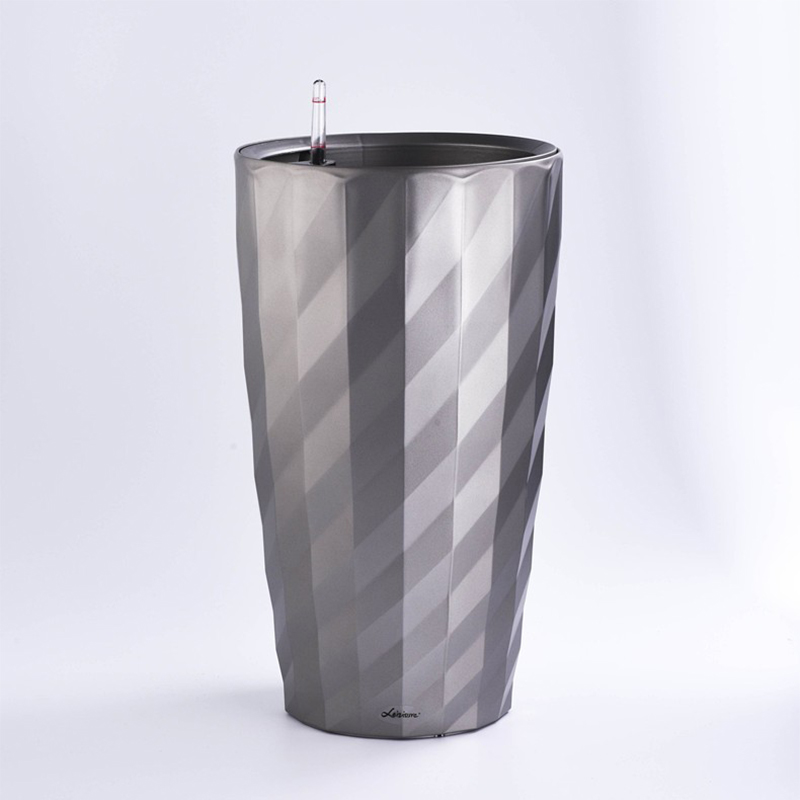In the world of gardening and home decor, the quality and uniformity of products such as small painted plant pots, lightweight planters, and mini coloured plant pots play an important role in customer satisfaction. As consumer preferences evolve, manufacturers increasingly turn to automated production methods to enhance consistency across their product lines. Automated production offers many benefits that help maintain steady quality and appearance, which are especially important for items that are often sold in sets or collections.

One of the key advantages of automated production is its ability to reduce variation during manufacturing. When producing small painted plant pots, for example, manual processes can introduce inconsistencies in size, paint coverage, and finish quality. Hand-painting pots or manually assembling lightweight planters might advance to variations that become noticeable when items are displayed together. Automation helps less these differences by using machines programmed to repeat precise movements and paint applications, ensuring that each small painted plant pot has a similar look and feel.
Moreover, automated production lines can manage the manufacturing of mini coloured plant pots with improved speed and accuracy. These pots often require vibrant and uniform colours to appeal to customers who enjoy decorating indoor or outdoor spaces with playful and attractive planters. Using automated spraying or dipping techniques guarantees that the colour application is even and replicable, reducing waste and the risk of human error. This consistency not only enhances the visual appeal of the mini coloured plant pots but also helps retailers build trust in the products they offer.
The use of automation also positively impacts the structural consistency of lightweight planters. Uniform thickness and strength are important to ensure that the planters hold up well under typical use conditions. Machines equipped with advanced sensors and controls can monitor material flow, curing times, and molding pressure to maintain tight tolerances during production. This level of control helps reduce defects such as cracks, warping, or uneven surfaces that can occur with manual manufacturing methods. As a result, consumers receive lightweight planters that not only look consistent but also perform reliably over time.
Another important benefit is the scalability of production that automation provides. For manufacturers supplying a range of products, including small painted plant pots, lightweight planters, and mini coloured plant pots, automated systems allow for steady output while maintaining product uniformity. When demand increases, automated lines can be adjusted to produce higher volumes without compromising quality. This scalability is harder to achieve with hand-crafted or semi-manual methods, which depend heavily on skilled labor and can introduce more variability as output grows.
In addition to improving consistency, automation often contributes to more sustainable manufacturing processes. By precisely controlling the amount of paint, raw materials, and energy used, automated production can reduce waste associated with producing small painted plant pots and mini coloured plant pots. Less waste means a smaller environmental footprint, which is an increasingly important consideration for both manufacturers and consumers. Lightweight planters produced through automation can also be designed with material efficiency in mind, with less excess without sacrificing durability.
While automation offers many benefits, some manufacturers still balance automated production with artisanal techniques to retain unique qualities in their products. However, for product lines where consistency and repeatability are essential, especially for small painted plant pots and mini coloured plant pots, automated production is a valuable tool. It helps ensure that each planter meets predefined standards, supporting brand reputation and customer satisfaction.
In conclusion, automated production enhances consistency in various aspects of planter manufacturing. Whether it’s the even paint application on small painted plant pots, the uniform colour finish on mini coloured plant pots, or the structural integrity of lightweight planters, automation helps maintain steady quality levels across batches. This consistency is crucial for retailers and consumers who expect reliable and visually cohesive products. As technology advances, automated production will likely continue to play a significant role in the manufacture of decorative and functional planters, meeting evolving market demands while supporting efficient and sustainable processes.

 English
English 日本語
日本語 Español
Español Deutsch
Deutsch عربى
عربى

